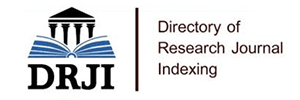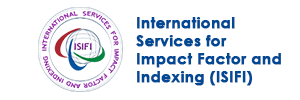
Journal Basic Info
- Impact Factor: 1.995**
- H-Index: 8
- ISSN: 2474-1647
- DOI: 10.25107/2474-1647
Major Scope
- Minimally Invasive Surgery
- Orthopaedic Surgery
- Thoracic Surgery
- Gastroenterological Surgery
- Otolaryngology - Head and Neck Surgery
- Obstetrics Surgery
- Surgical Oncology
- Neurological Surgery
Abstract
Citation: Clin Surg. 2017;2(1):1728.Research Article | Open Access
Minimally Invasive Treatment of Penetrating Thoracic Injuries at a National Trauma Centre - Introduction of an Algorithm and Conduct of a Proof-of-concept Study
Richardsen I, Schwab R, Willms A, Schreyer C, Schaaf S, Bieler D and Güsgen C
Department of General, Visceral and Thoracic Surgery, German Armed Forces Central Hospital of Koblenz, Germany
Department of Trauma-Surgery and Orthopaedics, Reconstructive and Hand Surgery, and Burn Medicine, German Armed Forces Central Hospital of Koblenz, Germany
*Correspondance to: Arnulf G. Willms
PDF Full Text DOI: 10.25107/2474-1647.1728
Abstract
Introduction: The minimally invasive approach of video-assisted thoracoscopic surgery (VATS) has become standard practice in thoracic surgery. Its role in the management of penetrating thoracic trauma has not yet been clearly defined, however. Considering the growing threat of terrorist attacks in Europe, the injury patterns that such attacks typically cause and the resulting increase in the number of cases of penetrating thoracic trauma, it is of utmost importance that the management of such trauma be standardised and the role of VATS evaluated. In particular because of the relatively low number of penetrating thoracic injuries in Germany, it is vital that surgeons know the optimised and standardised methods of trauma management.Material and
Methods: This paper presents an algorithm for the management of penetrating thoracic trauma in which VATS is firmly established. In addition, the data of all thoracic trauma patients who received treatment at a national trauma centre between 2012 and 2016 were recorded in databases and evaluated. The aim was to examine the practicability of the introduced algorithm within the framework of a proof-of-concept study. Furthermore, the treatment concepts for the more common blunt thoracic trauma and the far less frequent penetrating thoracic trauma are compared. Finally, the literature search helped to verify our algorithm and identify possible contraindications for VATS in penetrating thoracic trauma management.Results: A total of 340 patients with thoracic trauma received treatment between 2012 and 2016. Of those, 19 patients (6%) suffered from penetrating thoracic trauma. All penetrating thoracic injuries were treated based on the algorithm and using minimally invasive techniques. The most common reason for VATS was haemothorax, followed by injuries to the lung parenchyma. Unlike blunt thoracic trauma, which was most commonly treated conservatively or with chest tube insertion, penetrating thoracic trauma was usually treated invasively. The median length of hospital stay was 15 days (6–37 days). The mean ISS (injury severity score) was 17 (16–25) and the intraoperative and postoperative morbidity rate was 33.3%. There were no cases of intraoperative or postoperative mortality.Discussion: VATS is a safe method for managing penetrating thoracic trauma in haemodynamically stable patients. It must therefore be firmly established in the management algorithm. Studies with a larger number of cases are necessary to support these results along with the practicability of the algorithm introduced in this paper.
Keywords
Penetrating thoracic injury; Thoracoscopic surgery; Thoracic trauma; VATS; Stab wounds
Cite the article
Richardsen I, Schwab R, Willms A, Schreyer C, Schaaf S, Bieler D, G�sgen C. Minimally Invasive Treatment of Penetrating Thoracic Injuries at a National Trauma Centre - Introduction of an Algorithm and Conduct of a Proofof- concept Study. Clin Surg. 2017; 2: 1728.













